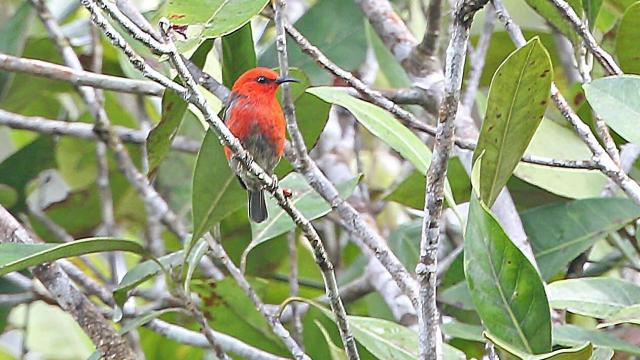Scientists encountered five previously undescribed bird species during a six-week trip to three Indonesian islands, according to a new study.
People like birds for more than just their appearances: Birds are a diverse group of relatively easy-to-study animals, with a dedicated group of citizen scientists providing data on them that can inform biologists’ understanding of biodiversity more generally. But researchers have long thought that they’d catalogued most of the bird species, and there have been just a trickle of new species descriptions annually. A find such as this one demonstrates that much of the world’s biodiversity is likely still hidden from biologists, even as humanity destroys the habitats that these hidden species rely on.
“Habitat destruction on these islands is rampant and climate change has already taken its toll,” the study’s first author Frank Rheindt, associate professor in the department of biological sciences at the National University of Singapore, told Gizmodo in an email.
Researchers in Singapore, with the help of local collaborators in Indonesia including researcher Dewi Prawiradilaga, ventured to three of the islands off of the northeastern coast of Sulawesi, the big k-shaped Indonesian island, from November 2013 to January 2014. As with any specimen-collecting trip, they hiked around the islands, taking birds that had flown into a net to analyse later. Yes, this involves killing the bird, the ethics of which are debated.
This trip revealed 10 birds new to science, five of which the researchers classified as full species based on genetic analysis or analysis of the birds’ appearance and song. The researchers felt that the other five birds warranted at least subspecies status, though they said that this was a conservative position for some of the specimens. And though these species are new to a museum collection, most had been known previously, either to locals or past visitors to the islands, according to the paper published in Science’s supplemental material. Though these birds are new species, they’re all part of existing genuses of birds, including the fantails, grasshopper-warblers, or leaf warblers. In other words, there weren’t any shockers here.
The researchers specifically targeted these islands in their search for new species. Islands are already hotspots for new species, since they isolate any population of animals from the mainland population, causing speciation over time. Recent ice ages have caused large drops in sea levels, at times revealing land bridges that would allow genetic information to flow between island and mainland populations, decreasing the likelihood that new species would evolve on certain islands. But the islands that the researchers targeted, especially Peleng and Taliabu, are separated from Sulawesi by a deep chasm, making it more likely for endemic species to evolve due to the islands’ increased isolation. Additionally, the researchers travelled to mountain habitats that few ornithologists have ever visited.
Researchers not involved with the study were impressed with the findings and were generally confident with the team’s analyses.
“We generally think of birds as being well-known, and finding new species is uncommon enough,” Sushma Reddy, associate professor in ornithology at the University of Minnesota, told Gizmodo in an email. “But finding multiple new species is an indication of a severely under-explored region.” She said that while the tropics are some of the most species-dense regions, they’re also some of the least studied in terms of biodiversity.
Another researcher, Jonathan Kennedy from the University of Sheffield in the United Kingdom, told Gizmodo that this research continues the work of 19th-century biologist Alfred Russel Wallace, for whom this region is named and who separately devised a theory of evolution and natural selection around the same time as Darwin. He told Gizmodo that the idea of biological exploration and discovery is seen as a historical activity, but “it’s actually just as relevant as it was during Wallace’s time.” He felt this was especially true given the fact that species are going extinct at an alarming rate, while humans have only documented a small fraction of the world’s biodiversity.
I have problems with species collection or exploration as a modern remnant of European colonialism, and expeditions like these make me uneasy. But the authors note that today, human activities are destroying much of the world’s biodiversity, both directly through habitat destruction and indirectly through the effects of climate change, and biologists hope to get a handle what’s going to be lost. Already, the scientists are beginning to see to see these same effects on the islands, from companies logging on Taliabu to forest fires and droughts exacerbated by climate change. These effects will continue to impact species, even the undiscovered ones, as well as the humans living there.
